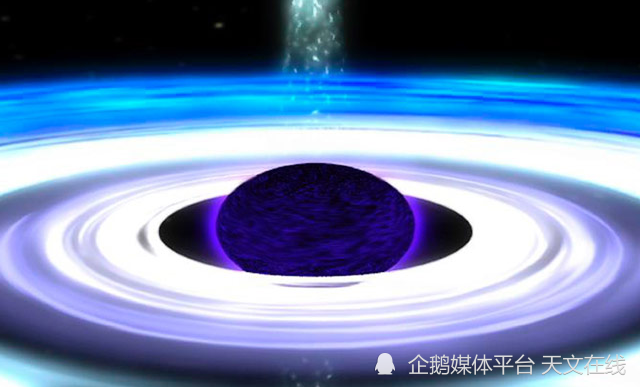The black hole's "one lunch" exposes its enormous mass.

A concept map of a black hole from an artist, surrounded by an accretion disk. The gas in this disk is heated to millions of degrees Celsius and emits X-ray radiation outward. (Image source: NASA/Honeywell Max-O Digital Group/Dana Berry)
A team of astronomers at the University of Cambridge has discovered a phenomenon like the rapid rotation of hot gas as it falls into a supermassive black hole. These first-time observations, showing the black hole devouring material in an inward-rotating disk, helped figure out the mass of these hungry "abyss throats."
This massive black hole is located at the center of the NGC 3516 galaxy, which is about 100 million light-years away from the Big Dipper. The material sucked in by the black hole's powerful gravitational field forms a disk and is heated to extreme heat, causing it to emit light over a wide frequency range.
The XMM-Newton satellite observed a sudden increase in the X-rays of the disk. Andrew Fabian of the University of Cambridge and his colleagues interpreted this as an X-ray flare occurring near a black hole. The X-ray flare is somewhat similar to a solar flare, Fabian said, but it releases 10 trillion times the intensity of energy as a solar flare. The light emitted by the flare excites the iron atoms in the accretion disk near it, causing them to emit a beam of photons at a specific frequency.
Fabian said: "It's like a plate, painted with a little bit of lacquer. ”
The light emitted by iron atoms changes over time, meaning that the "painted" gas is orbiting a very large object. Calculations based on Einstein's general theory of relativity show that the mass of this object— the black hole — is between 10 million and 50 million solar masses.
The findings, consistent with other estimates of the black hole's mass, will be published in the forthcoming Monthly Journal of the Royal Astronomical Society.
Fast four "years"
The XMM-Newton satellite observations lasted about a day, recording four-week rotations of the active gas. The exposed radius of rotation, similar to the distance from the Earth to the Sun, prompted Fabian to imagine what it would look like if he were on the edge of a rotating gas. Since "one year" – that is, spinning around a week , takes only seven hours , it means that the disc is spinning wildly at one-tenth the speed of light.
If it were really on the edge of a rotating gas, the sky around Fabian and other observers would be covered by a black hole, which is 40 to 200 times wider than the Sun. What it all looks like is hard to understand, because the enormous gravitational pull bends light in strange ways.
"It's going to be a spectacular sight." Fabian said.
But this exclamation will soon come to an end. Because, Fabian suspected, after only a few days of observation, the bright gaseous part fell into the relentless black hole. The exact time of extinction depends on the viscosity of the material that the disk makes up, and whether the black hole itself is rotating.
Graphic recognition
Flares are a phenomenon that often occurs around these supermassive black holes. In fact, observations of NGC 3516 were made three years ago, but recent analysis of it revealed the secrets of the flare. Lead researcher Kazushi Iwasawa produced an X-ray map, a jagged pattern drawn from analytical data.
"The eyes are very good at discerning patterns," Fabian said.
The researchers noticed that the frequency of the excited iron atoms changed, and they attributed this change to the fact that the gas was moving closer to us and sometimes away from us during its rotation. This frequency shift is called the Doppler shift, similar to the pitch change of the "bull roarer". - The "Cow Roarer" is a traditional musical instrument that holds a thread in its hand and makes a sound by rapidly rotating and swinging on the side of the head.
In addition to the Doppler shift, there is an overall frequency shift because photons lose some energy as they escape from the gravitational field around the black hole.
It may be accidental
Although the zigzag pattern is in line with the theoretical speculation of the rotation of gas around the black hole, it is difficult to give a final conclusion through only four rotation cycles.
"I think we're lucky. Because we are at a critical point where we can judge," Fabian said.
The researchers conducted another simulation experiment to confirm that the cyclical changes they saw were not random accidents after some disturbance. Fabian said he and his colleagues are optimistic about the veracity of the phenomenon, but some astronomers remain receptive.
"People's reactions range from 'Wow, it's really like this' to 'I'm not sure about that.'" Fabian said.
BY: Michael Schirber
FY: Peppercorns
If there is any infringement of the relevant content, please contact the author to delete it after the work is published
Please also obtain authorization to reprint, and pay attention to maintaining completeness and indicating source